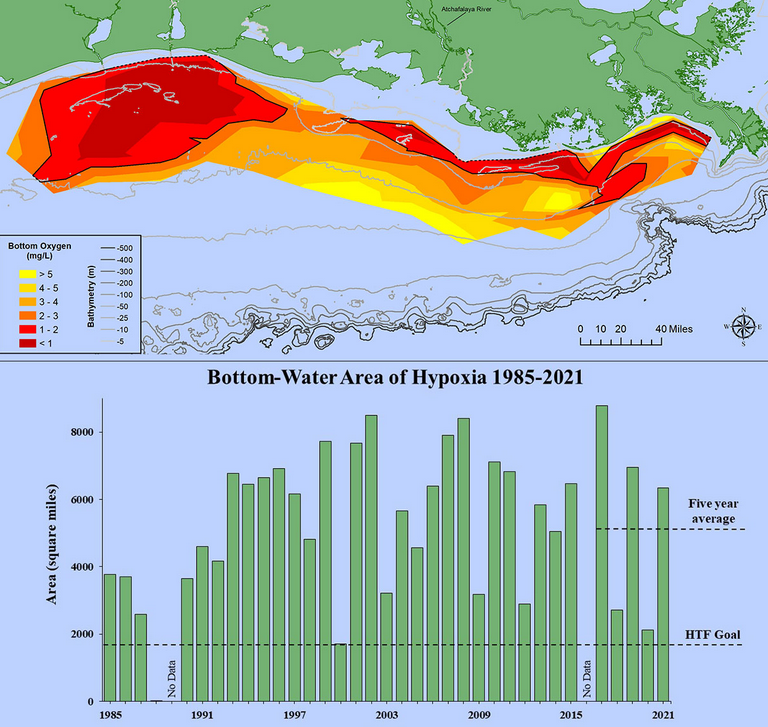Dealing with Dead Zones: Hypoxia in the Ocean
 NOAA Ocean Podcast: Episode 13. When water runs off of farmland and urban centers and flows into our streams and rivers, it is often chock-full of fertilizers and other nutrients. These massive loads of nutrients eventually end up in our coastal ocean, fueling a chain of events that can lead to hypoxic "dead zones" — areas along the sea floor where oxygen is so low it can no longer sustain marine life. In this episode, we're joined by NOAA scientist Alan Lewitus to explore why dead zones form, how the problem of hypoxia is growing worse, and what we're doing about it.
NOAA Ocean Podcast: Episode 13. When water runs off of farmland and urban centers and flows into our streams and rivers, it is often chock-full of fertilizers and other nutrients. These massive loads of nutrients eventually end up in our coastal ocean, fueling a chain of events that can lead to hypoxic "dead zones" — areas along the sea floor where oxygen is so low it can no longer sustain marine life. In this episode, we're joined by NOAA scientist Alan Lewitus to explore why dead zones form, how the problem of hypoxia is growing worse, and what we're doing about it.
Hypoxia - Dead Zone
 How did the dead zones in the ocean off Oregon form? Join scientists Jack Barth and Francis Chan of Oregon State University as they conduct hypoxia research along Oregons coast. Produced by Green Fire for the Partnership for Interdisciplinary Studies for Coastal Oceans.
How did the dead zones in the ocean off Oregon form? Join scientists Jack Barth and Francis Chan of Oregon State University as they conduct hypoxia research along Oregons coast. Produced by Green Fire for the Partnership for Interdisciplinary Studies for Coastal Oceans.
OA - Changing Waters On The Oregon Coast
 Oregon is ground zero for ocean acidification impacts--the water chemistry off our coast is already changing and has changed dramatically. For a glimpse into the science, the impacts and the information gaps behind ocean acidification in Oregon, check out the video below. Oregon researchers, industry members and policy leaders have teamed up to better comprehend these chemical changes to our marine waters. While there are still many unknowns about specific impacts, large scale changes are likely to occur. And ultimately, these changes have the potential to impact everyone that lives here.
Oregon is ground zero for ocean acidification impacts--the water chemistry off our coast is already changing and has changed dramatically. For a glimpse into the science, the impacts and the information gaps behind ocean acidification in Oregon, check out the video below. Oregon researchers, industry members and policy leaders have teamed up to better comprehend these chemical changes to our marine waters. While there are still many unknowns about specific impacts, large scale changes are likely to occur. And ultimately, these changes have the potential to impact everyone that lives here.
